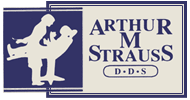Articles - Your Health Magazine, September 2009
Snoring and Sleep Apnea: Trial Procedures In Oral Appliance Therapy
Last October, in my article, “The Keystone to Success in Oral Appliance Therapy for Snoring and Sleep Apnea”, I concluded that trial procedures are the method of matching up the oral appliance to each person. This is because of physical and functional variations of both people and oral (more that 150) devices.
I indicated that, in a future article, I will discuss trial procedures where the appliance type and many design characteristics are determined by patients testing trial versions of the MRD and of the TRD at home, generally for a period of two weeks each. This coupled with examining each patient and studying x-rays and plaster casts of their teeth and movements of the jaws and tongue allows the skilled and dedicated oral appliance therapy practitioner to obtain the most compatible match of the oral appliance to each patient and maximize treatment success.
Trial procedures often begin at the initial visit and culminate in the design of a definitive appliance. Ongoing feedback is required throughout the trial process, including training and orientation sessions. This provides information for modifying the trial devices (trial TRD and trial MRD) and for design features critical in choice of a definitive oral appliance to maximize treatment success.
I define success as:
- Providing the minimal intervention (least change) to,
- Have the maximum impact (effectiveness),
- Least side effects (unwanted collateral damage), and,
- The best compliance (user friendliness leading to use as directed).
One can assess the relative fit, comfort and convenience associated with wearing the trial device and, with the sleep disorders dentist, interpolate this to wearing the definitive counterpart.
Clinical Effectiveness May Be Assessed Through:
- Empirical feedback (observed snoring and breathing cessation, reduction of excessive daytime sleepiness, morning headaches and other signs and symptoms),
- Review of voice activated tape recordings or video and audio recordings while sleeping with the trial devices and without them, and,
- Interpretation of overnight sleep studies, including home oximetry, while wearing them.
During trial procedures patients also have the opportunity to get used to wearing an oral appliance. This includes experiencing excessive salivation or a dry mouth for a time period of a few days to a few weeks, as their body adapts to the appliance. TMJ symptoms associated with wearing the oral appliance can also be assessed and addressed as well as pending dental treatment.
To date there is no scientific basis for predetermination of the appropriate definitive oral appliance for each patient. Clinical testing is required and this process is referred to as “Trial Procedures”.
